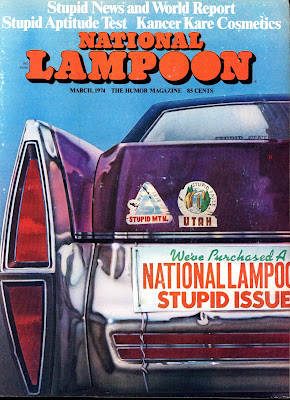Book Review: 'The Book of Skulls' by Robert Silverberg
1 / 5 Stars'The Book of Skulls' first was issued in hardcover by Charles Scribner's Sons in December, 1971. Numerous paperback editions have been published since then, including this Bantam Books edition (196 pp.) from January, 1983, which features a striking cover illustration by Jim Burns.
‘The Book of Skulls’ represents an effort by Silverberg to access the mainstream novel readership as it stood in the early 1970s, namely, the people who belonged to the Book of the Month Club and the Literary Guild, rather than the people who belonged to the Science Fiction Book Club. With ‘Skulls’, Silverberg plainly hoped to emulate the tales of youthful misadventures that proved so successful for Larry McMurtry with ‘The Last Picture Show’ from 1966; Jules Feiffer’s play ‘Carnal Knowledge’, made into a 1971 film; and the novels of Philip Roth (Eli Steinfeld, a character in ‘Skulls’, is essentially a younger version of Roth’s frustrated, self-conflicted Jewish males).
‘Skulls’ is set in the early 1970s. In the opening chapters we are introduced to the four characters: Eli, Oliver, Timothy, and Ned. All are students and roommates at an unnamed Ivy League university in New England. We learn that while poking around the dustier shelves in the basement of the university library, Eli came across a medieval manuscript titled Liber Calvarium, i.e., The Book of Skulls. According to the manuscript, by completing the Trial of the Skulls it is possible to achieve immortality. There is a catch, however: four people must apply for the ritual, and one of them must die at the hands of the others, and one must die by his or her own hand.
Would you be willing to wager your life for a 50:50 chance at immortality ? The four boys think that, yes, they would, so as the novel opens, they are on a Spring Break road trip from their university to a remote location in the Arizona desert, where they hope to find the House of Skulls. Once there, Eli, Ned, Timothy, and Oliver will proceed with the Trial, each hoping it’s someone else who winds up with the shorter end of the stick………….
‘The Book of Skulls’ has an intriguing premise but sadly, Silverberg doesn’t do much with it.
The narrative is rather awkwardly constructed around revolving first-person discourses by each of the four protagonists. Silverberg adopts this procedure in order to expend considerable text on internal monologues, which inform the reader that the boys only are partially convinced that the House of Skulls, and the Trial of Skulls, even exist, but intend to satisfy their curiosity on the matter. When, on page 94, the boys finally do reach the House of Skulls, the remainder of the novel soon exhausts itself in chronicling the boy’s innermost fears and desires over the cost-benefit ratio of their eschatological enterprise. This temporizing simply pads the narrative, and doesn't do much to advance the storyline.
The novel’s prose style is dense and overwritten, couched in a kind of breathless hipster argot marked by run-on sentences that are compacted into paragraphs that can approach two and one-half pages in length. Readers will have to negotiate phrases in Latin, allusions and expositions on all manner of highbrow topics, and words like:
muniment: an archived document or record
uncial: medieval script
geniza: the area of a synagogue or cemetery where manuscripts or documents are stored
incipit: the opening words of a medieval text
circumvolutely: referring to rolling around or encircling something. While 'circumvoluted' is listed by Merriam-Webster online, 'circumvolutely' isn't listed....?!
By the time the denouement of ‘The Book of Skulls’ finally appeared I was so fatigued from plodding through all the verbiage that I observed the fate of Oliver, Timothy, Ned, and Eli with indifference.
The verdict ? 'The Book of Skulls' fails to engage, neither as a mainstream novel, nor as one of Silverberg's more adventurous excursions outside the sci-fi genre.












































%20-%20Page%2058.jpg)































